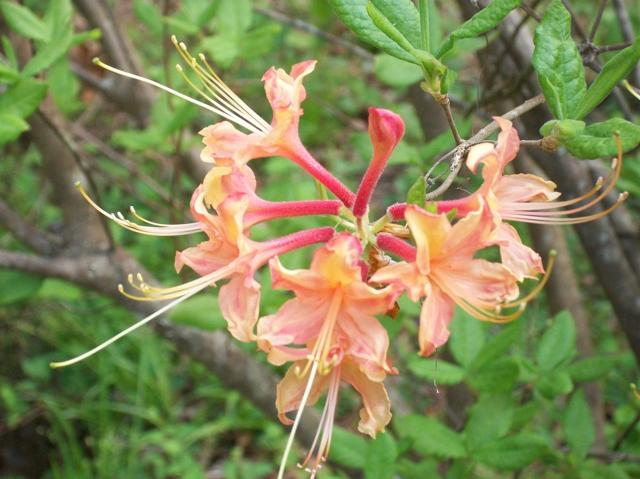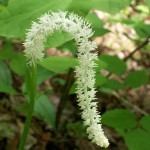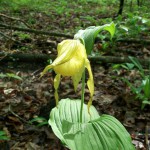“Let a joy keep you.”
— Carl Sandburg
After spending hours one day last spring drawing diagrams, creating options and hashing out ideas, my head spun. I couldn’t think anymore, so I decided to take a walk.
I drove to my favorite spot, Carl Sandburg's home in Flat Rock, and parked near redbud trees dressed in their purple lace. Walking the path to the house, I nearly brushed past a cluster of columbines, their golden centers aimed at the earth, flaming tips pointed back at the sun like falling stars. Nearby, at the trout pond, the apple orchard's snowy blossoms made a canopy over a bed of violets filling the grass.
Five easy places
Our top five choices for spotting spring blooms are all easy to find and have well-groomed paths offering pleasant hikes of less than three miles. These are the species we identified at each of them last year (our favorite guidebook, Wild Flowers of North Carolina by William S. Justice, C. Ritchie Bell and Anne H. Lindsey, is available at local bookstores):
• Carl Sandburg Home: (www.nps.gov/carl/index.htm) redbud trees, apple orchard, columbines, violets, trillium, yellow star grass, pink lady’s slipper, rhododendron, wild azaleas, honeysuckle, bluets, dog hobble, dwarf iris.
• Holmes Educational State Forest: (www.ncesf.org/HESF/home.htm) trout lily (early spring), bloodroot (early spring), dwarf iris, dame’s rocket, fairy wands, rhododendron, mountain laurel, false Solomon's seal.
• DuPont State Forest: (dupontforest.com/) dwarf iris, dogwood, fireweed, rhododendron, wild azaleas, violets, fire pink, dog hobble, lily of the valley, pink and yellow lady’s slippers, trillium, foam flower, bluets. These were spotted along the Cedar Rock, Little River, Stone Mountain and Reasonover trails.
• Moore Cove Falls, Pisgah National Forest: (hikewnc.info/trailheads/pisgah/pisgah/guidedhikes/moorecovefalls.html) rhododendron, wild azaleas, trillium, dogwood, redbud trees, fairy wands, foam flower, dwarf iris, violets.
• Crabtree Meadows Falls, Blue Ridge Parkway: (carolina-north.com/crabtree_falls.html) crab apple trees, redbud trees, dogwood, rhododendron, wild azaleas, trillium, beardtongue, jack-in-the-pulpit, gentians and many varieties of violets.
Higher up, the woods enfolded me like an embrace, green upon green. Then, at the top of Little Glassy, I glanced at my feet and found something I'd previously seen only in books but had always wanted to witness in the woods, just once in my life: pink lady’s slippers, their moccasin-shaped blooms lining the path like miniature fairy lanterns set out for a lawn party. I blinked, looked around, rubbed my eyes: Yes, this was real.
Western North Carolina's woods are a garden of exotic flowers. More than half of the state's nearly 3,000 species of flowering plants grow here, and more than 300 of those grow only in the mountains, turning an afternoon hike into a treasure hunt.
The earliest flowers appear in the southernmost trails of the Appalachians in late March. April hosts abundant spring blossoms in forests east of the Blue Ridge Parkway, just as their branches begin to show a faint, wispy green. By May, blooms start spreading into summits above 4,000 feet and their alpine meadows.
In late March last year, we began hiking near the South Carolina border south and east of Asheville. Week by week, we gradually worked our way north toward the higher elevations, completing our spring hikes in June. The highest points, such as Craggy Gardens, are in full bloom then.
As I descended Little Glassy on my magical hike at Sandburg's home that late April day, my path was strewn with flowers: rhododendron, flame azaleas, trillium, bluets, yellow star grass, dwarf irises. It was hard to believe I hadn’t stepped into a fairy tale. For weeks after that, I was surrounded by earth's glory on my walks.
This season, you can be, too.
— Cassandra Frear recounts her adventures hiking the Carolinas on her blog (www.moonboatcafe.com).






